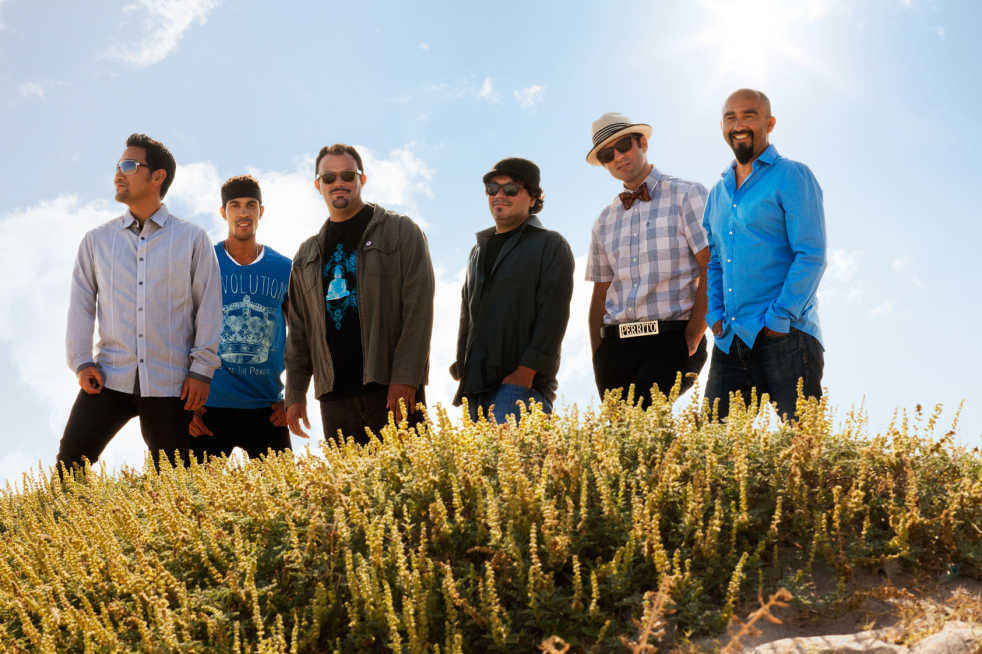Raul Pacheco laughed as he recounted to me the last few, bittersweet days with his college-bound son. He had already sent his 19-year-old daughter to the University of California at Santa Cruz and enjoys living vicariously through her, but this goodbye is different. After his excited son leaves for Northeastern, he will be what they call an “empty nester.”
Pacheco is convinced that his children “both know I’m [Pacheco] here. I could be playing in Japan or Australia, and if they need me I’ll jump on a plane. I want them to have that sense of security, but rely on themselves as well as they grow older.” Now, he is left with the question, “What do I do now with my life?”
As an artist, Pacheco has always been on the move. He was gone frequently when his children were young, and he and his wife made sacrifices for the band. To foster a closer connection with his children, he and his band decided to remain in Los Angeles.
Pacheco is overwhelmed with how lucky he is to do what he does. He has met wonderful people around the world and is challenged every day to get better.
Personally, Pacheco grew up in a loving household in Boyle Heights, the same neighborhood that his parents were born in. He learned to “appreciate good songs” because of his family of music
lovers. Anything from classical Mexican music, to Van Morrison, to heavy metal, to his sisters’ kiddie bop craze was constantly played in the house.
All of the Ozomatli band members knew each other previously, some even since junior high, but each started out in different bands. While some of them were working for an organization that went on strike, they were given a building that they planned to use to start a youth arts center.
To raise the money to start the center, a group of friends agreed to make music. They did not even have a drummer, but they needed to put something together to fill up the time. A mix of Mexican folk songs and a funk/reggae beat kept them going, and thus, Ozomatli was born.
At the time, the band did not go by Ozomatli. The band as it is known today came about when all of the members were brainstorming. One man suggested the unique name “Ozomatli,” and many of the members were unsure. They thought they should have an easier name if they wanted to be popular, but when they heard the background behind the name they were intrigued.
Ozomatli was an Aztec monkey who was a “nahual” (servant) of the Aztec god “Xochipilli” (god of music and dance). Known to be a mischievous character and orchestrator of the jungle, Ozomatli is “responsible for party and trouble, but also joy, harvest, and reaping the benefits of what you have sown.”
This peculiar name started the thirst for individuality and positive energy that the band capitalizes on to this day. Each band member contributes a knowledge of various types of music, influenced by their disparate backgrounds. This diversity can be heard in their combinations of different instruments, such as the sultry sound of a Veracruz guitar over a lively breakbeat.
Whether experimenting with the Tres (Cuban guitar) or Som (modern salsa music), the band hones in on their philosophy to capture their sound as individuals and make it all work together. Pacheco’s favorite album cover highlights this unique theme. The cover is a compilation of pictures from an all-day photo session. The photographer visited each band member’s house and depicted them in their element. Then, they took photos where each person was stepping into another’s home, indicating their combined worlds and talents.
As a unit they have decided, “Whatever we do, we gotta rock the crowd.” And rock the crowd they do. Ozomatli has a song for any mood. As a group, they produce songs such as “La Gallina” (The Chicken), which conveys their nonsensical and silly side through a metaphor of control. Listeners find it hard to resist tapping their feet to the playful beat. Pacheco suggested that it is meant to communicate, through a layer of conflict, the sportive message that “someday we are going to change the world, but now we are going to dance” and take a break from the troubled world.
Pacheco commented on how he loves the versatility of Ozomatli — how they can go from creating something more irreverent such as “La Gallina” to something more deep such as “Cuando Canto” (When I Am Singing). Pacheco stated that the more serious songs develop when the band has the opportunity to use their fame to talk about something “other than themselves.”
Ozomatli hopes to conquer societal topics, like immigration, wealth distribution, race and how young people are not supported, through their music.
When “Cuando Canto” was released, Pacheco was confused, drinking too much and making poor relationship choices that made him tap into a question he continually pondered: “What is really my purpose, our purpose, everybody’s purpose in life?”
“Cuando Canto” is about a choice, a daily commitment to be a better person. Bands like Ozomatli are typically seen as a form of “escapism,” said Pacheco, and are “just supposed to put on a show for you that puts you on a journey.” However, when Ozomatli sings, they want to impart that despite life’s ups and downs, it should be lived with joy, and issues should be talked about along the way. Ozomatli motivates listeners to reevaluate their purpose.
